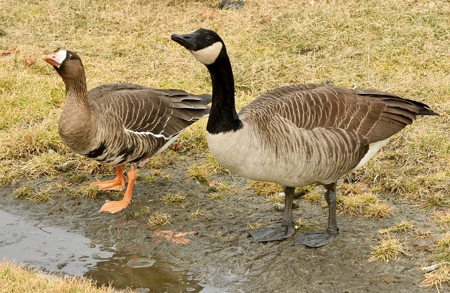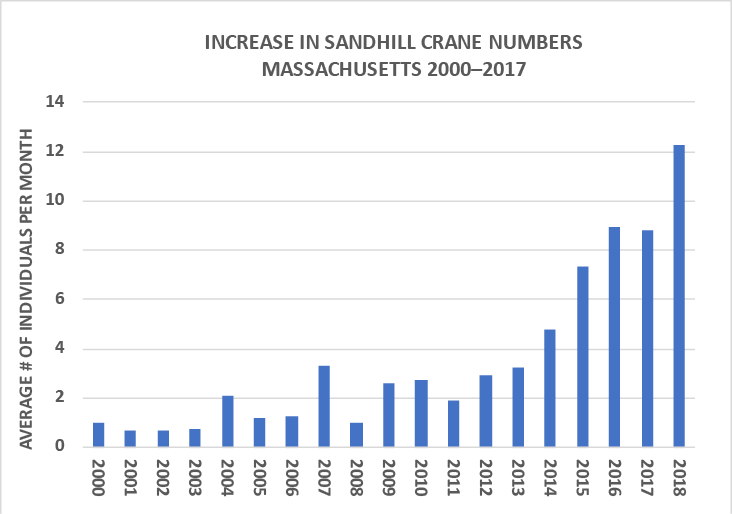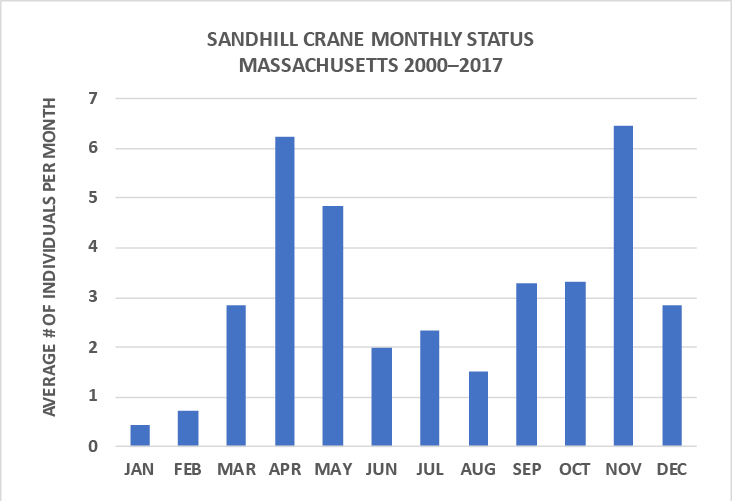Neil Hayward and Robert H. Stymeist
March came in like a lamb. The first of the month registered 60 degrees, which would end up being the high for the whole of March. A nor'easter on March 2, coming on the heels of one in late February, brought heavy rains and cold temperatures to eastern Massachusetts together with significant snowfall at higher elevations in Worcester, Franklin, and Berkshire counties. Wind gusts exceeding 50 mph felled many trees, and approximately 67,000 homes were without power. This storm was followed by another nor'easter on March 7–8 that dumped over six inches of snow on Boston and up to 18 inches on parts of Worcester County. Another nor'easter, the third in less than two weeks, brought another 14 inches of snow to Boston on March 13–15. Heavy, wet snow fell in Bristol County, the South Shore, and Cape Cod. Combined with high winds in these areas (gusts of 81 mph were recorded in Falmouth), many power lines and trees were knocked down leaving thousands without power for several days. The average temperature in Boston for March was 37 degrees, just one degree below normal. Total rainfall was 5.07 inches, almost an inch above normal. Snowfall in Boston for the month was 23.3 inches.

Greater White-fronted Goose and Canada Goose by David Clapp
April weather was a great improvement over that of March with no major storms. The average temperature for the month was 45 degrees in Boston, three degrees cooler than normal. The high was 70 degrees on April 28, and the low was 29 degrees on April 6. Rainfall for the month in Boston was 4.62 inches, nearly an inch above normal, and snowfall totaled 1.3 inches, with most of that falling on April 6. Strong southwest winds aided migration at the end of the month.
R. Stymeist
WATERFOWL THROUGH HERONS
Numbers after dates reflect the number of days early (-) or late (+) compared to average arrival date. Thus, Piping Plover (March 24, +10) means the earliest record this year was March 24, 10 days later than the average arrival date (i.e., March 14). Average arrival dates are calculated from eBird data for the period 2000-2017 inclusive.
Wild geese were still being chased this period as they started to make their return journeys north. The highlight was a Pink-Footed Goose at Rehoboth on March 26. Based on the coloration and pattern of the bill, this is likely the same individual that was present at nearby Dighton between January 28–February 1, and at Swansea on February 21. With earlier records at Hadley, Westfield and Turner's Falls, this has been a good winter for this now annual visitor. Greater White-fronted Geese were reported from seven locations and Cackling Geese from six different counties.
Tundra Swan is an uncommon spring visitor to the state. This year's long-staying individual at Carver is the ninth eBird record for Plymouth County and the first since 2007.
Duck highlights this period were mostly of the Green-winged Teal variety. The Eurasian subspecies crecca was reported from an impressive six counties. American x Eurasian hybrids, or intergrades, have been reported annually in March and April since 2009. This year a high of three individuals were found distributed among Hampshire, Essex and Plymouth counties. More unusual was the continuing Green-winged Teal x Gadwall hybrid at Marion on the South Coast. This bird was found by Nate Marchessault on December 20, 2017 and described by him in Bird Observer 46 (2): 113–115. Despite geographic overlap of the (presumed) parents, this hybrid offspring is rare with only four other North American records documented by eBird.

Figure 1. Sandhill Crane numbers in Massachusetts, 2000–2017. The average number of individuals per month are shown for each year. The average for 2018 is calculated for the months January–April. Data based on Bird Observer records.
The male Tufted Duck first reported on December 10 successfully over-wintered on Nantucket, continuing through at least the end of April. King Eiders were found up and down the North and South Shore, with a count of three birds at Plum Island on April 30 tying the previous April high count set in 1998. Large counts of Black Scoter (2,310) and Long-tailed Duck (2,440) were reported in April from Rockport and Plum Island, respectively. Three reports of the northern borealis subspecies of Common Eider were received from Cape Cod.
A Black-billed Cuckoo photographed at Daniel Webster Wildlife Sanctuary in Marshfield on April 17 is the earliest record this century–by a long way. This species typically arrives around May 6. The only other April record for the 2000s was last year on April 30. Historically, though, such an early record is not without precedent; in 1973, following coastal storms, birds appeared on April 4 and April 7.
Common Gallinule is a rare breeder and uncommon migrant in the state, typically appearing around May 2. This year, three early birds were found in April.
In 1973, at the inception of this publication, Sandhill Cranes were rare visitors to the state. Historically, however, the species may have been a common migrant and regular nester in New England. Indeed, some of the colonists at Plymouth reported that on February 21, 1621 they ate "a very fat goose...a fat crane, and a mallard" (Bradford and Winslow 1622). Other historical texts, where the authors seem able to discriminate between cranes and herons, suggest that cranes arrived en masse in Massachusetts in early March, in numbers sufficient to be hunted and sold for food. (In 1634 a crane would have cost you two shillings.) But such bounty didn't last long. Edward Howe Forbush, Massachusetts State Ornithologist, wrote of them, "The great Sandhill Crane once roamed the Atlantic coast in migration, and probably was the only crane that was ever common in any part of New England. Like the wild turkey, it disappeared with the coming of settlement and civilization." (Forbush 1925)

Figure 2. Sandhill Crane monthly status in Massachusetts. Average number of individuals per month are shown for the years 2000–2017 inclusive. Data based on Bird Observer records.
The past couple of decades have seen a marked uptick in New England sightings of Sandhill Cranes (see Figure 1). This is likely a result of range expansion of a population based in the midwestern United States and Ontario. The first confirmed breeding record for New England in post-colonial times was Maine (2000) followed by: Vermont (2002); New York (2003); Massachusetts (New Marlboro, 2007); and New Hampshire (2014). In March and April this year Sandhill Cranes were reported from a record 18 locations, and the species can now be considered a regular spring and fall migrant with peaks in April and November, summer visitor or rare breeder, and occasional winterer (see Figure 2). As such, after this reporting period, the species will no longer warrant the bold type in the listing section that is typically reserved for rarer birds. We hope this action won't spell the kiss of death for these majestic birds.
Shorebirds were slow to return to the region this year. Piping Plovers appeared on March 24, 10 days after the average arrival date this century. Other late-returning shorebird species included: Lesser Yellowlegs (March 31, +6); Pectoral Sandpiper (April 1, +8); American Oystercatcher (March 17, +9); and Least Sandpiper (April 29, +13) with the latter two logging the latest arrival records for these species this century. Meanwhile, 50 Purple Sandpipers were still hanging out at Plum Island on April 29.
Shorebird highlights included three reports of American Golden-Plovers in April. This species is typically recorded only once or twice in the spring, as the majority of migrants fly much farther west of the state than they do in the fall when they are more frequently reported. Whimbrel has a similar pattern of occurrence in the state, and the one spring record this year, in East Boston on April 19, is about average. The shorebird highlight was arguably a Western Willet that was carefully documented at Yarmouth on April 14. This subspecies is a rare spring migrant for Massachusetts, with only five previous spring records: April 1933, March 2003, May 2013, April 2016 and March 2017 (an overwintering bird). With the exception of the March 2003 bird at Salisbury, all records are from Cape Cod and the Islands.
Strong northeasterly winds on March 2–3 brought good numbers of seabirds close to shore with Race Point scoring: 47 Dovekies, an Atlantic Puffin (with two others reported from Orleans), and 620 Black-legged Kittiwakes.
For the second consecutive period Mew Gull stole the front page in gull news. This time, though, there was a twist: the action moved from Lynn Beach to the South Shore and the subspecies mix was shaken up. As well as the nominate European "Common Gull," Larus canus canus, reported from Cohasset and Provincetown, there was an adult of the North American subspecies, L. c. brachyrhynchus. The latter, perhaps surprisingly, is considerably rarer than either the European subspecies, or the East Asian kamtschatschensis form. A brachyrhynchus adult seen and photographed at Cohasset on April 15–16 (confusingly at the same time as a European canus) would constitute only the second photographic record for the state. The first was probably an adult photographed at Race Point last year, also on April 15, that had initially been identified as the Kamchatka subspecies. There are two historical reports of brachyrhynchus noted by Veit and Petersen (1993) which have yet to be reviewed by MARC, both first-cycle birds at Nantucket Harbor in October 1980 and September 1981.
Almost as rare for the state as American Mew Gulls are inland sightings of Little Gull. Despite multiple reports every year for Massachusetts, there are only four records away from the coast. Two of these were spring migrants, with the first being found by Ludlow Griscom at Pittsfield on April 20, 1946 and the second on April 29, 2016, also at Pittsfield. The two other inland records were from Turner's Falls in December 2008 and November 2016. Remarkably, there were three reports this spring from these same two sites. Iceland Gulls were well represented along the coast, including 19 reported from Deer Island. An adult of the Thayer's subspecies was photographed at Provincetown on March 15.
With the exception of Common Tern (April 26, +3), terns returned to the state about a week earlier than average: Caspian Tern (April 14, -6), Roseate Tern (April 27, -6), and Least Tern (April 28, -5). The first tubenoses of the year were even earlier in their return, some considerably so: Manx Shearwater (March 24, -23), Leach's Storm-Petrel (April 16, -35) and Sooty Shearwater (April 26, -5).
Up to three Pacific Loons were present at Race Point and Herring Cove Beach through March and April. Provincetown has become the most reliable place to find this species, and birds have been reported there throughout this winter since late December.
A Least Bittern discovered at West Harwich on April 14 was the earliest record this century, a full three weeks ahead of its average arrival date. Snowy and Great egrets were three or four days later than average, and Little Blue Herons were a week late. Prior to this century, there were only three or four records of White-faced Ibis for the state. Since then the species has expanded its range into the Great Plains and up the Atlantic Coast as far north as Maine and Nova Scotia. Since 2007 White-faced Ibis has been recorded annually in Massachusetts, most reliably in Essex County. This year the pattern continued, with up to three birds roaming the marshes of Ipswich and Essex. Breeding has yet to be confirmed, although a bird was seen tending a nest at Kettle Island in 2009.
N. Hayward
VULTURES THROUGH FINCHES
The town of Sheffield, in Berkshire County, has always been the place to go to see Black Vultures. Fifty-two of them were counted on March 26, although this is still short of the record 77 Black Vultures recorded in Sheffield on January 1, 2016.
The Plum Island hawkwatch at Lot 1 was well covered for the month of April. Some of the more impressive totals included: 167 Northern Harriers, 76 Merlins and 378 American Kestrels. Two Golden Eagles were recorded at the Barre Falls hawkwatch: an adult on April 5 and a sub-adult on April 11.
Snowy Owls were reported from over 30 localities, with five individuals present at Nantucket on March 25. A Barn Owl was noted in Harwich and another was found dead in Chatham. Records of Barn Owls away from the islands of Martha's Vineyard and Nantucket are unusual. A Barred Owl was found at the Sheriff's Meadow Sanctuary in Edgartown on March 9. This is the first sighting of Barred Owl on Martha's Vineyard since 1948.
Favorable winds on April 12–14 delivered the first push of migrants. Good numbers of Eastern Phoebes were noted in several locations including a count of 30 on Plum Island on April 13, when the temperature was a balmy 69 degrees. The first Purple Martins returned on April 13 to Rehoboth. This year an additional 12 gourds were added to the existing 84 at the Crestwood Country Club, making this the largest colony in Massachusetts. Other traditionally early April migrants arriving in high numbers during this period were: Blue-headed Vireo, Ruby-crowned Kinglet, Hermit Thrush and Pine Warbler. A Northern Parula found in Truro on April 14 was notably early.
Significant waves of migrants also arrived during the last week of April. Following a stretch of cool temperatures and easterly winds, the mercury shot up on April 22. Temperatures stayed in the 60s through the end of the month, with a high of 70 on April 28, providing favorable conditions for migration.
The highlight of the period was a Fork-tailed Flycatcher found in East Sandwich on April 13. This is only the second April record for the state, with the first being from Brighton on April 12–15, 2014. Among the other vagrant and noteworthy sightings was the long-staying Townsend's Solitaire at Demarest Lloyd State Park in South Dartmouth. This bird was first found on November 12, 2017. With the last sighting on April 22 this bird was present for over five months! A Bullock's Oriole visited a feeder at a Nahant home adjacent to the Mass Audubon Sanctuary, delighting many birders during its two–day stay. Two male Painted Buntings were reported from Marstons Mills and nearby Cotuit.
Reports of Red Crossbills nesting in Berkshire County this spring are particularly exciting. In the Montague Wildlife Management Area as many as nine individuals were reported and nest building was documented on March 15. Other Red Crossbills were noted in Washington and Windsor.
R. Stymeist
References
- Bradford, W. and E. Winslow. 1622. Mourt's Relation or The Journall of the English Plantation at Plimoth. Ann Arbor, Michigan: University Microfilms, Inc.
- Forbush, E.H. 1925. Birds of Massachusetts and Other New England States. Part I Massachusetts Department of Agriculture. Norwood, Massachusetts: Norwood Press.
- Marchessault, N. 2018. Presumed Gadwall x Green-winged Teal Hybrid, Bird Observer 46 (2): 113–115.
- Veit, R. R., and W. R. Petersen. 1993. Birds of Massachusetts. Lincoln, Massachusetts: Massachusetts Audubon Society.